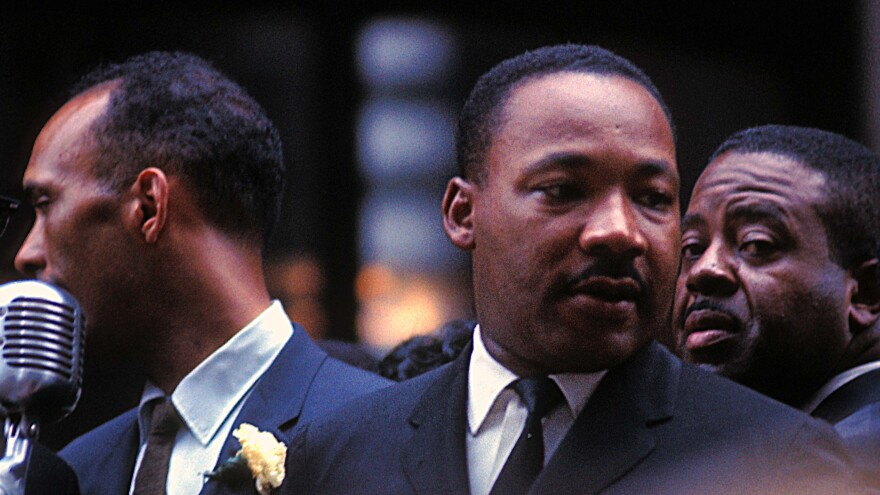Fifty years ago, Dr. Martin Luther King Jr. moved with his family to Chicago, where he was to spend a year laying the groundwork for bringing the civil rights movement to the North. The campaign came to be known as the Chicago Freedom Movement — a broadening drive against segregation, which was often as thorough in practice in the northern states as in the South, especially when it came to housing.

Bernard Kleina was there, too. The Chicago native and former Catholic priest documented the King-led demonstrations in the city — and he did so in rare color photographs.
"In Chicago, I was involved in some of the marches and in other marches I tried to document what was going on," Kleina recalls. "There was a great deal of criticism of Dr. King, saying that he was the one causing the violence, so I wanted to show the truth of what was going on."
Kleina was a newcomer to photography, and especially to photojournalism. "I only — before that — took photos of my family and vacations."
As a young priest, Kleina was drawn to the civil rights movement. He followed King to Selma, Ala., in 1965, but he says he couldn't take photographs there for fear his camera would be destroyed. But in 1966, when King moved to Chicago, Kleina says he was thought it important to use his camera to document events, especially to document that the demonstrators were peaceful and not the ones provoking the riots.

As for why those photographs are in color? Well, that was kind of an accident.
"Virtually no one else shot in color at that time of demonstrations, because at least the pros wanted to be sure that their images would be in newspapers and magazines. I definitely didn't realize at the time I was photographing Dr. King that history was being made," Kleina says.
"Even now, it kind of surprises me when I look back at my own images. But I like to tell people that if you wait until you're completely qualified for something, maybe it's too late."


His time following Martin Luther King Jr. in Chicago inspired Bernard Kleina to launch a career as a professional photographer. His work is now included in the collections of the National Museum of African American History and Culture, part of the Smithsonian Institution.
He eventually left the priesthood and also worked as a fair housing advocate.
"Because of Dr. King and his focus on open housing, I became involved in a fair housing center outside of Chicago. For the last 41 years, I tried to use my photography to help people understand the hurt of discrimination," he says. "The Chicago Freedom Movement started in 1965, but it's still going on, and it's up to us to carry on his work."
Copyright 2023 NPR. To see more, visit https://www.npr.org.


